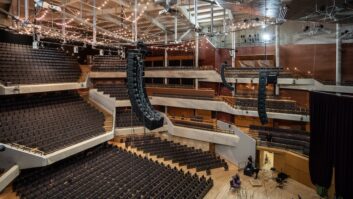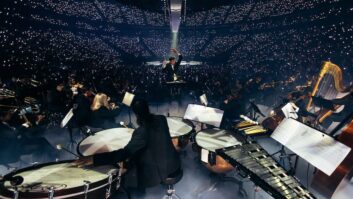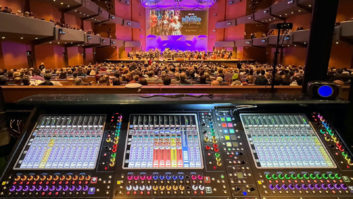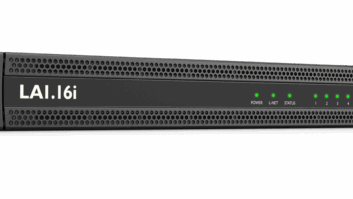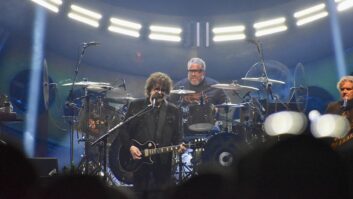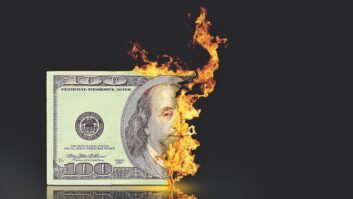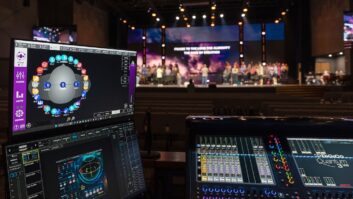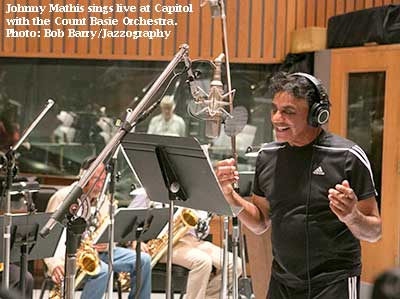
Music being one of the season’s greatest gifts, we interviewed the seven-time Grammy-winning producer/engineer/musician who made one of this year’s grandest Christmas albums: The Count Basie Orchestra’s A Very Swingin’ Christmas, featuring guests Johnny Mathis, Ledisi, Ellis Marsalis, and others. Gregg Field was the Orchestra’s drummer from 1980 to ’82. His production and performance credits include Sinatra’s Duets and Ray Charles’ Genius Loves Company, as well as Ray Sings, Basie Swings. Field’s aim is to showcase orchestral soloists and vocalists, as well as capture the awesome power of the orchestra. Recording to Pro Tools 96/32-bit, he produced and co-engineered with Steve Genewick at Capitol Studios.
What makes this the Basie Orchestra now, more than 30 years after his passing?
Field: They carry on the tradition and the soul of the band, and it helps that many of the guys have been there a long time, including their new leader, Scotty Barnhart, who has played trumpet in the band for more than 20 years.
Knowing how to write material for this band also plays an important role in keeping its authenticity. Sammy Nestico, who wrote many albums for Basie, graciously agreed to return with a couple of arrangements for the new album [“Jingle Bells” and “Good Swing Wenceslas”], and I believe this was the first time Sammy has written for the band since Basie left us.
What’s your approach to miking the orchestra?
In addition to using the Royer SF-24 for the room, all the brass and reeds had spot mics. I love the way Royer R-122s sound on brass. For saxophones, I prefer [Neumann U] 67s, but often the problem with older mics is finding five in great shape. So, for the last few years I’ve used Mojave MA-300 mics on saxophones and woodwinds, and they sound great.
I set the band up with the trombones on the floor and the trumpets on risers behind them. The saxophones are opposite on the floor, facing the trombones and trumpets. So, the sax mics face away from the brass and the brass mics face away from the saxes. I put low gobos in front of the trombone and saxes. This gives me great iso, but they can easily hear and see each other.
The Basie guys aren’t studio players; they prefer to hear things acoustically, and some of them don’t wear ’phones. I put drums in the booth with the door open and bass and guitar baffled in the room. In this situation, a bit of leakage is a plus, as it expands the overall sound without creating uncontrollable ambience, which reduces the overall impact of all those horns firing up.

You had Ellis Marsalis on piano. What was your miking scheme there?
First of all, who better to sit in Basie’s chair than Ellis Marsalis? Under most circumstances for piano miking, I use a method that Phil Ramone and I came up with, placing a pair of (AKG) C12s just outside the piano about a foot back with the lid completely open; and then, immediately next to the C12s, a pair of [Neumann] U 87s. Phil added a [Neumann] U 67 right over the middle C string. The combination of those mics, for me, gets as close to the experience of hearing a live piano as I’ve heard.
Did the vocalists sing live with the band?
Absolutely! I picked this up from working with Sinatra and Michael Bublé: I start with the singers in the booth for two or three takes, which gives us an isolated vocal track as well as a clean band track. Once they’ve totally got it, we put a U 67 vocal mic in the middle of the band and go for it. By then, the singer is comfortable with the arrangement, and by putting them out in the room surrounded by the band, you’re teeing up a great performance!
Field mixed in his personal studio, G Studio Digital.
